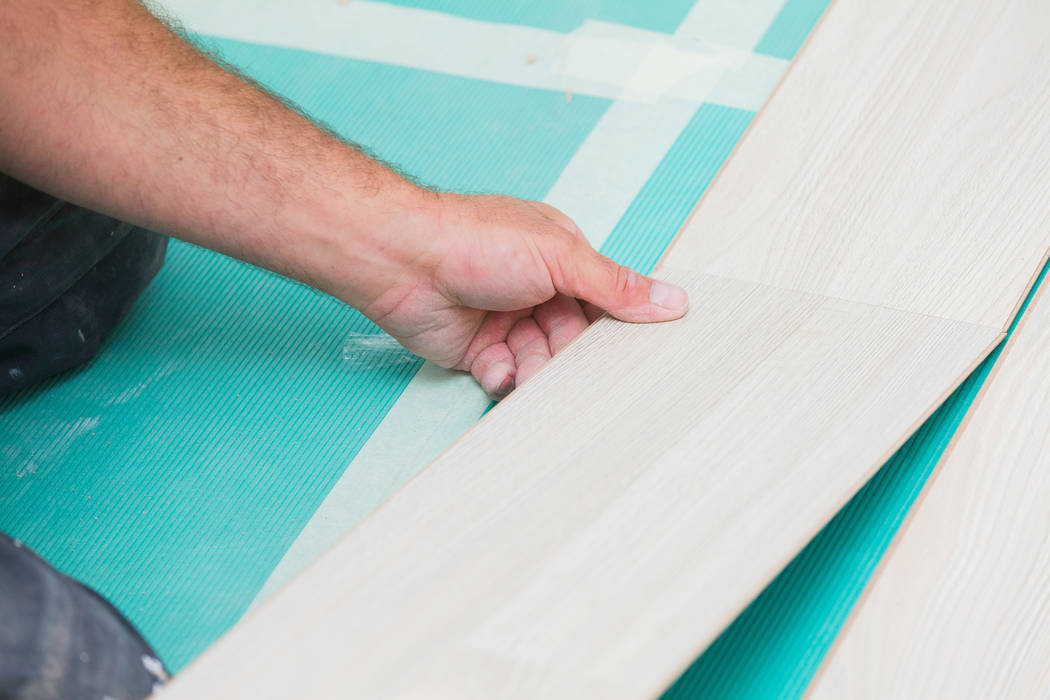Save money by reinstalling vinyl flooring yourself
Q: I have a powder room, and the vinyl flooring needs to be replaced. The room is only about 6 by 6 feet. How do you make sure that there won’t be any gaps when installing it?
A: The duty is in the details and this job requires a lot of measuring and precision. There are a couple of things you can do to reduce your margin of error, such as removing the baseboards and toilet. That way you don’t have to be dead-on with your cuts; when you reinstall these items, they will cover the flaws.
You can save several hundred dollars by installing the vinyl yourself, and you can feel confident by drawing a template of the floor. Vinyl will start around $10 per yard, but you can buy remnants for much less. Since your bathroom is fairly small, you should be able to find one for less than $20.
You may be able to install the new vinyl over the old stuff if it is in good condition and still well secured to the floor. If you have tears in the old vinyl, you might be able to cut out a small section containing the tear and fill in the void with floor filler. If you choose to remove the old floor first, you must scrape up the old adhesive underneath it.
You can buy a template kit for about $20 or you can use heavy butcher paper or red rosin paper. The red rosin paper is heavier and won’t tear as easily.
Tape the paper to the floor leaving about an inch along the perimeter of the walls and vanity. Overlap any seams of the paper and tape the pieces together.
You will need a framing square and a compass. In a corner, place the framing square against the wall. It doesn’t matter how wide the square is or what the compass points are set at as long as you use the same settings when you transfer the marks to the new vinyl. Transfer the shape of the floor to the template by holding the square against the wall and making a mark along the inside edge of the square.
When you reach a curved or irregular area, like a bathtub, use the compass. Set the distance between the point and the pencil equal to the width of the square and run the point of the compass perpendicular to the curved surface.
When you have gone along the perimeter of the room, peel up the template and lay it on top of the new sheet of vinyl. Tape it down and again run the square along the straight lengths of the template, only this time mark along the outside of the square. This will transfer an exact fit onto the new sheet of vinyl.
Your floor is small enough not to have any seams. If you were doing a room that required two pieces of vinyl, you would tape one sheet on top of the other to match the pattern, and then transfer the pattern. You would need to hold a straightedge on top of the two taped sheets and cut them simultaneously.
With the pattern transferred, it’s time to cut the vinyl. Use a utility knife with a hook blade. Gently pull the hook through the vinyl along your mark. When you’ve cut the piece, roll it up and spread it out in the bathroom to make sure it fits.
Trim the vinyl if needed and then roll half of it back up. Apply vinyl adhesive to the floor according to the manufacturer’s instructions using the appropriate sized notched trowel. The adhesive will have to get tacky to the touch, and then you will have limited time to unroll the vinyl back down into the adhesive and smooth out the air bubbles starting from the center and pushing toward the edges. You can rent a floor roller or use a rolling pin. Do the same for the other half of the floor.
Reinstall the baseboard and toilet and then lay down a thin bead of caulking where the vinyl meets the tub. This will prevent water from getting underneath the vinyl. You shouldn’t have to replace your floor for another 10 years.
Mike Klimek is a licensed contractor and owner of Las Vegas Handyman. Questions may be sent by email to handymanoflasvegas@msn.com. Or, mail to 4710 W. Dewey Drive, No. 100, Las Vegas, NV 89118. His web address is www.handymanoflasvegas.com.
Do-it-yourself
Project: Vinyl flooring
Cost: Starting at about $10/yard
Time: 4-8 hours
Difficulty: ★★★★























